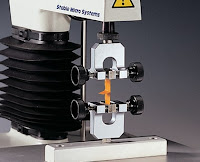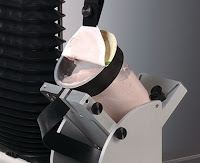The testing process subjected to ‘on the go’ products must also put their packaging on trial to ensure it will survive traditional transport methods as well as being pleasant to use.
 |
| A/MTG Mini Tensile Grips |
 |
| A/TCRS Triple Ring Cutting System |
 |
| A/RPR Ring Pull Rig |
 |
| A/UPS Universal Peel Rig |
 |
| HDP/3PB Three Point Bend Rig |
An assessment of the product itself should include a method that is designed for viscous liquids. Some studies incorrectly apply Textural Profile Analysis to yoghurt, but this method should only be used for large strain compression testing on freestanding samples. A more suitable test would use the Back Extrusion Rig, which gives a full profile of the sample’s consistency.
 |
| A/BE Back Extrusion Rig |
Small bags of pre-prepared fruit are a popular choice to grab from a supermarket shelf when shopping for a quick lunch. The challenge faced by manufacturers in this case is to ensure the fruit stays fresh and crisp but without excess packaging. Fruit samples should periodically be removed from their bag up until the specified ‘use by’ date and tested using a penetration probe. A 2mm diameter P2 probe is ideal for this purpose, as the puncture force of the skin can be assessed in the same stroke as flesh firmness. The bag itself must not be prone to bursting under the weight of other products during storage. The force required to burst a bag can be measured using a large compression platen. Anomalous low bursting forces should be investigated as part of any quality control procedure.
To find out more about Texture Analysis solutions for your on-the-go product range, talk to Stable Micro Systems today.
For more information on how to measure texture, please visit the Texture Analysis Properties section on our website.
 The TA.XTplus texture analyser is part of a family of texture analysis instruments and equipment from Stable Micro Systems. An extensive portfolio of specialist attachments is available to measure and analyse the textural properties of a huge range of food products. Our technical experts can also custom design instrument fixtures according to individual specifications.
The TA.XTplus texture analyser is part of a family of texture analysis instruments and equipment from Stable Micro Systems. An extensive portfolio of specialist attachments is available to measure and analyse the textural properties of a huge range of food products. Our technical experts can also custom design instrument fixtures according to individual specifications.No-one understands texture analysis like we do!
To discuss your specific test requirements, click here...
 |  |  |
 |  |  |


No comments:
Post a Comment